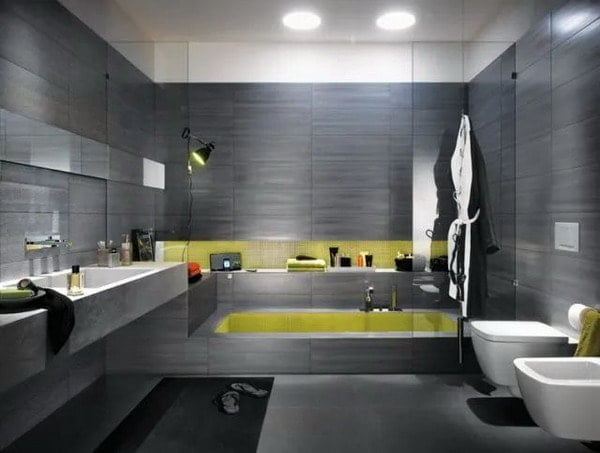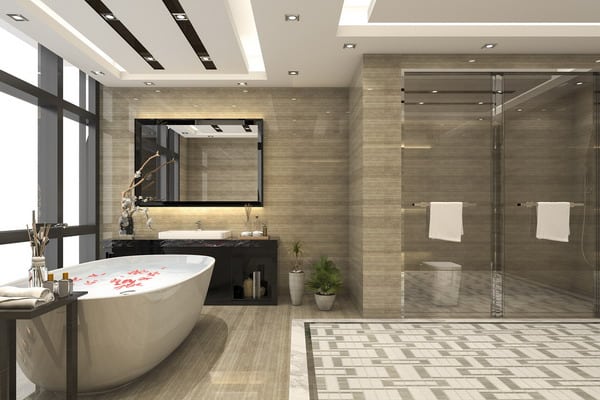Cleaning the toilet can be such an unpleasant task. However, as one of the most frequently used seats in every home, such a place requires regular and, above all, proper cleaning. This means that every toilet requires a certain level of attention and diligence when cleaning. However, you don’t have to invest too much time or effort into getting the porcelain throne sparkling clean. Here are some practical tips to help you complete this job easily.
Clean a heavily soiled toilet and make it shine
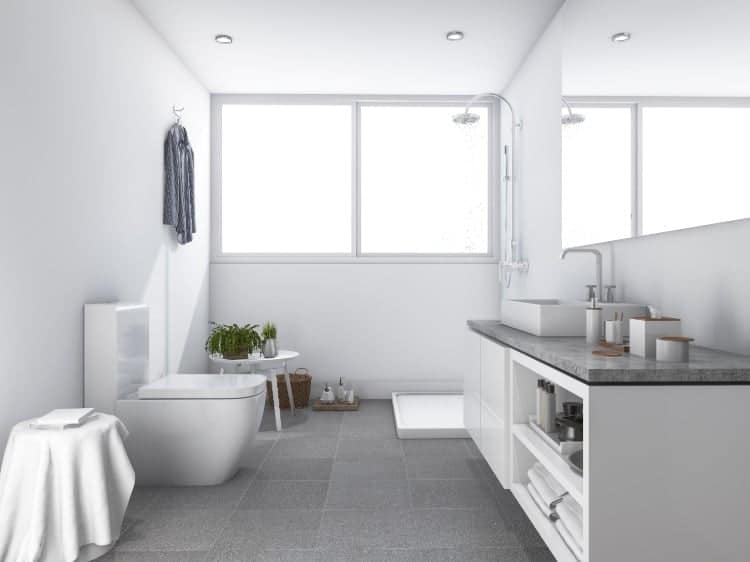
There is actually a right way to clean a toilet. Such a method prevents the spread of bacteria and germs. In addition, the right cleaning technique not only delivers excellent results, but also saves time and energy. A high number of toilet seats contain alarmingly high levels of mold and germs. It turns out that many people should clean their toilet properly. And although you can wipe them down regularly, the best way to remove germs and viruses is to disinfect the surfaces. For example, many people neglect to read the instructions on the cleaning products. For this reason, they do not know that the cleaning agent must work on the toilet surfaces for a certain amount of time in order to completely kill germs.
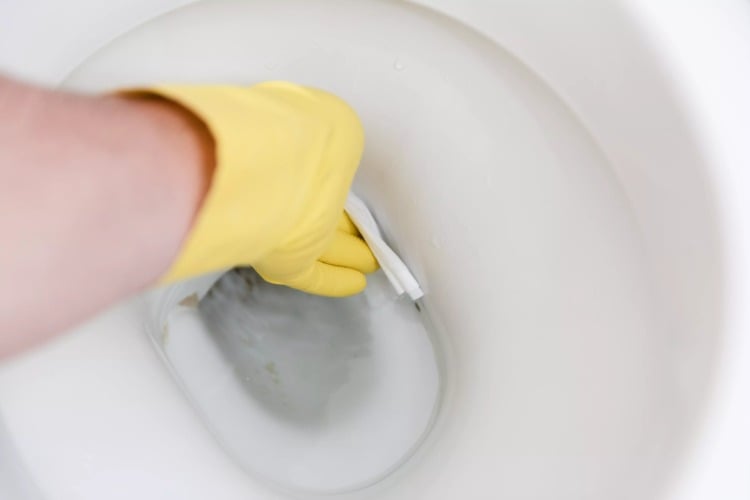
Disinfecting your toilet can reduce the risk of coming into contact with threatening germs and improve hygiene. This is especially true if someone in your family is sick. However, it is important to understand that the toilet can re-accept bacteria and viruses on surfaces even after just one use. For example, a single rinse can release E. coli bacteria into the air. There they can stay alive floating for up to six hours. Viruses can generally survive on surfaces such as a toilet for between a few hours and a few days. According to many researches, most cold and flu viruses survive from a few hours to 9 days depending on the temperature and relative humidity. Below you can find advice on how to disinfect all of a toilet’s dirtiest surfaces, as well as some tips for keeping the rest of your bathroom as clean as possible.
Preparation of the area and appropriate cleaning supplies
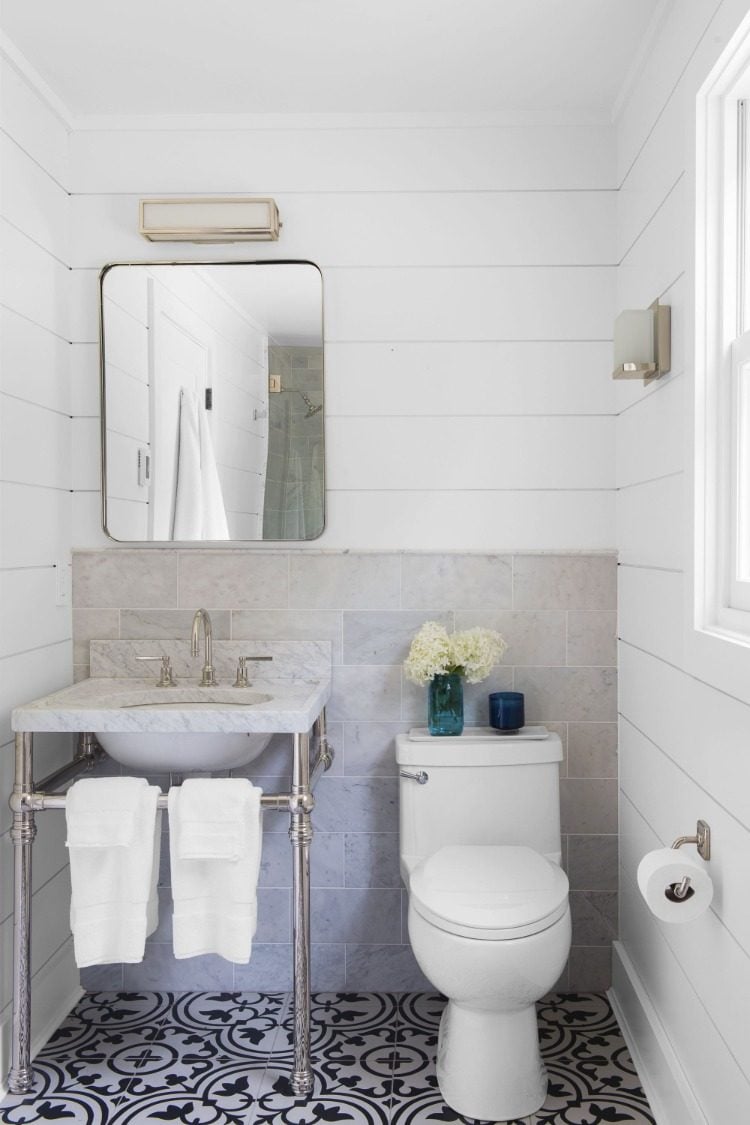
Remove everything around the toilet. Cleaning such an area is a messy task. Therefore, there is always a chance that you will spill toilet cleaner or toilet water outside of the actual toilet. Prevent unnecessary additional cleaning by removing all excess items from around the toilet and lid. Also, don’t forget to remove anything on top of the cistern to prevent items from falling into the toilet bowl while cleaning. Before starting work, put on rubber gloves. Clean the toilet with the lid closed to avoid splashing water. Then add a cleaning product of your choice to the toilet bowl. Try to apply the cleaner as close to the edge of the toilet as possible to avoid diluting it.
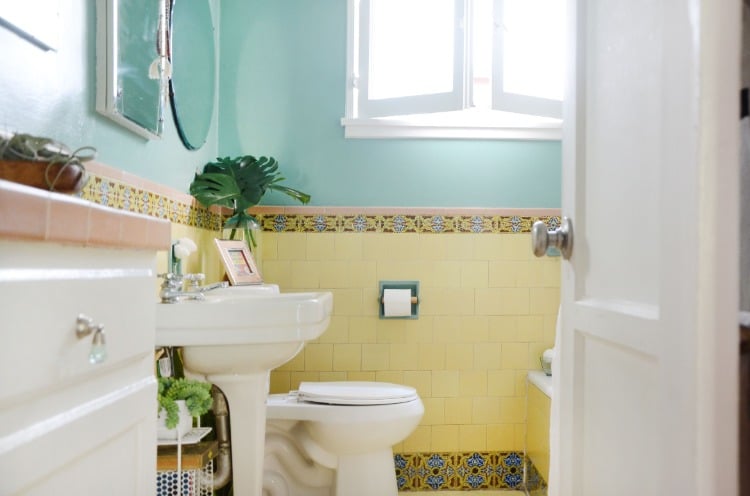
Never mix bleach and vinegar. Never place a dripping toilet brush in the holder. Slide the brush between the toilet lid and the rim to allow excess water to drip off when you’re done cleaning. Always clean in a well-ventilated place. Keep the doors open and open a window (if you can) or turn on the fan. Before you begin cleaning, you will typically need toilet cleaner and toilet brush, all-purpose cleaner (for outdoor use), a cleaning cloth and/or paper towels, and a smaller toilet brush, such as an old toothbrush. You may also want to use a pumice stone or other grinding tool if there is any buildup or urine scale that you would like to clean out of the toilet.
Clean the outside of the toilet
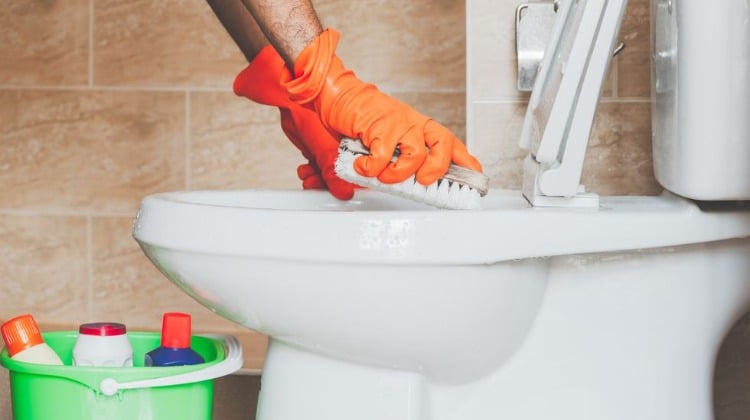
While the cleaning solution is penetrating the toilet dirt bowl, it is best to clean the outside of the toilet with an all-purpose cleaner. Start at the top to avoid dripping onto already clean surfaces. Spray the cistern, flush plate or flush button, and edges, then wipe everything down. Next, you can clean the outside toilet seat of the toilet. Finally, wipe down the entire outside of the bowl. Start like this with the sides and front before cleaning the bottom edges of the toilet. It’s best to try to remove the dirt from where the toilet bowl meets the floor. This is also a good time to mop the floor around the toilet.
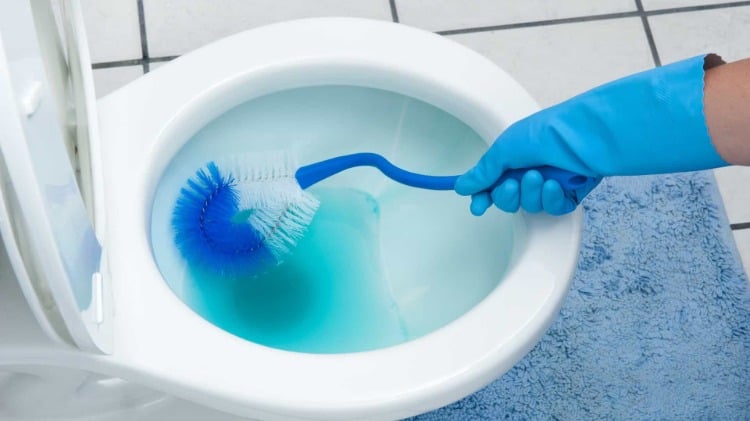
You should never neglect the toilet seat under the toilet seat. This is the part of the toilet that actually comes into contact with people, and you should clean this as thoroughly as possible. Lift the toilet lid so that you can easily reach it and spray the seat, the inner lid and the edge of the toilet with cleaner. Then wipe down the lid and hinges at the back of the toilet seat. Some toilets have hinges that open to allow better access for cleaning. Wipe the entire seat using a cloth soaked in clean water to remove any traces of bleach or chemicals from the seat surface.
Clean the inside of the toilet properly
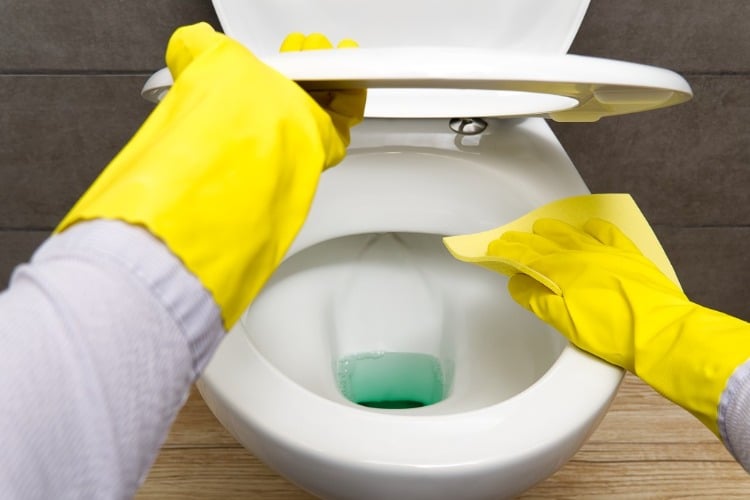
Now you can clean the inside of the toilet bowl. Start cleaning the bowl from top to bottom, first scrubbing under the rim. Make sure you get to all the stains and dirt. Next, scrub the bowl with the toilet brush. Finally, you can also clean the opening of the drain hole at the bottom of the toilet bowl. Then flush the toilet with the toilet lid closed. If the toilet bowl has brown or reddish rust or mineral deposits, scrub the porcelain with baking soda or a commercial product.
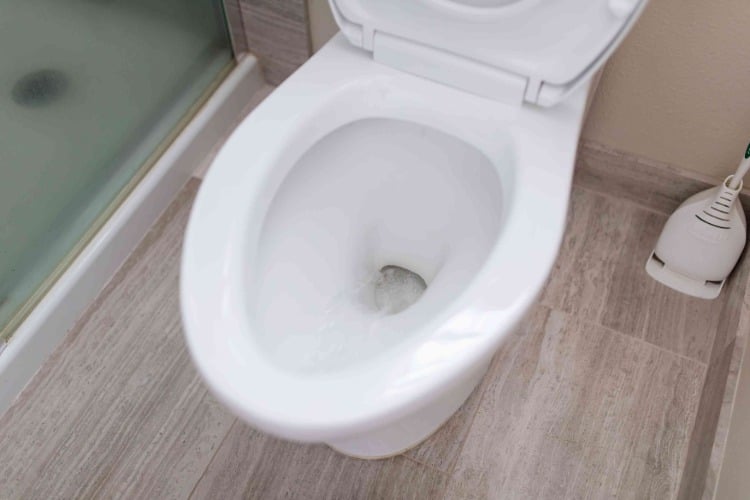
Some experts recommend pouring a can of Coke into the bowl, then scrubbing, rinsing, and finally mixing vinegar into the toilet bowl water. Some reviews show that this can dissolve any remaining impurities. So you can clean the toilet with Coke, but make sure you flush it first. This is important because such a home remedy can react with the chemicals in the all-purpose cleaner. After scrubbing, rinse the bowl again with the lid closed to prevent the spread of microbes. If stains remain in the bowl, you can carefully remove them with a pumice stone and then flush the toilet. Finally, clean up any drips of detergent or water that may have appeared, put away cleaning supplies and trash, and put any items you removed on or around the toilet back in their place.
Note some warnings
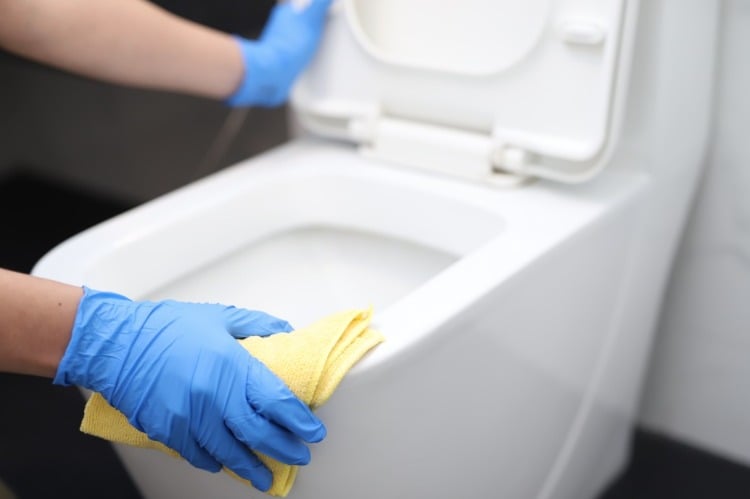
Wear eye protection when cleaning a toilet. Most cleaning products contain bleach and other chemicals that can irritate or damage your eyes. Safety glasses can protect you from splashes of toilet water and cleaning products. You may also want to use protective rubber or latex gloves to prevent contact with your hands. When flushing the toilet, keep the seat lid down to avoid splashes. If possible, avoid using sponges when cleaning a toilet. Moist sponges provide a perfect environment for the spread of bacteria. In such cases, some experts recommend sterilizing the sponge by placing it wet in the microwave for about 30 seconds. The heat generally kills all pathogens.
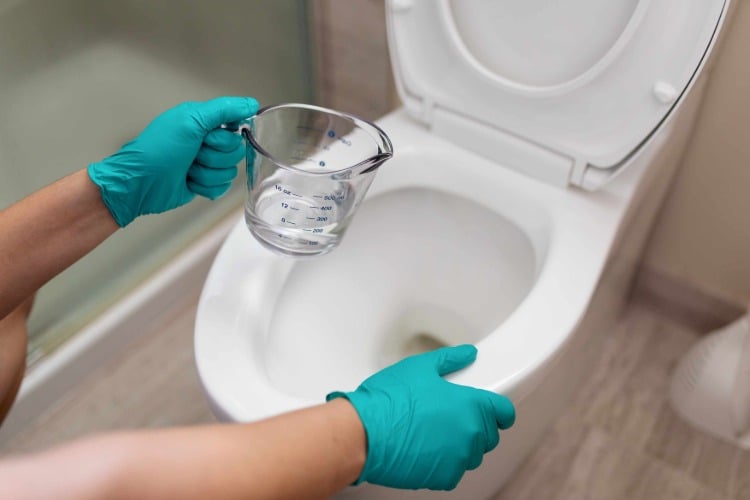
However, paper towels are also a good option because you can throw them away after cleaning. If you use reusable cloths, wash them immediately in a separate load with hot water and bleach. Avoid toilet bowl cleaning tablets, which can either fall into the cistern or hang on the edge of the bowl. These products may contain chemicals that damage porcelain. And if you have pets, there is a risk of them drinking the chemical-laden water.
Here’s how you can clean the toilet with home remedies
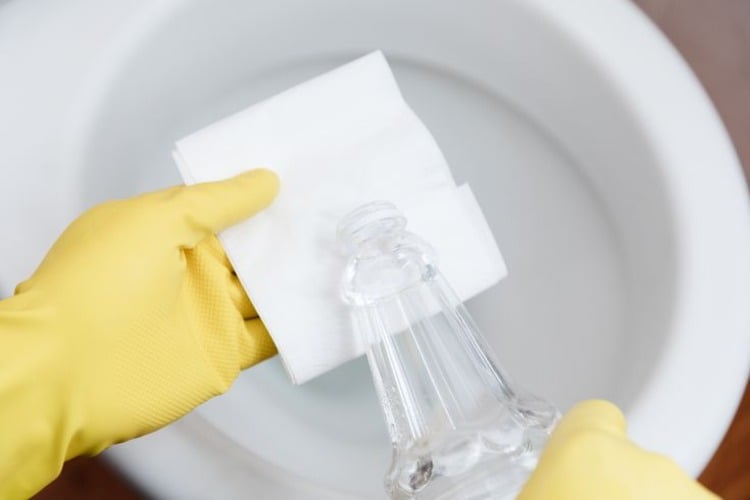
Coca-Cola, vinegar, baking soda and baby oil? A list of ingredients like that sounds like something bored kids would get together to play on a rainy day. However, these are just a few of the surprising alternative products you can use to keep your toilet clean and in tip-top shape. Additionally, reusing common household items like these not only saves money, but also helps reduce harsh cleaning products that can be harmful to your family and the environment. So don’t let the strange home remedies scare you away. These cleaning tips really work. Try them and learn how you don’t have to use harsh, expensive chemicals to keep your toilet clean.
This is how you can clean the toilet with Cola
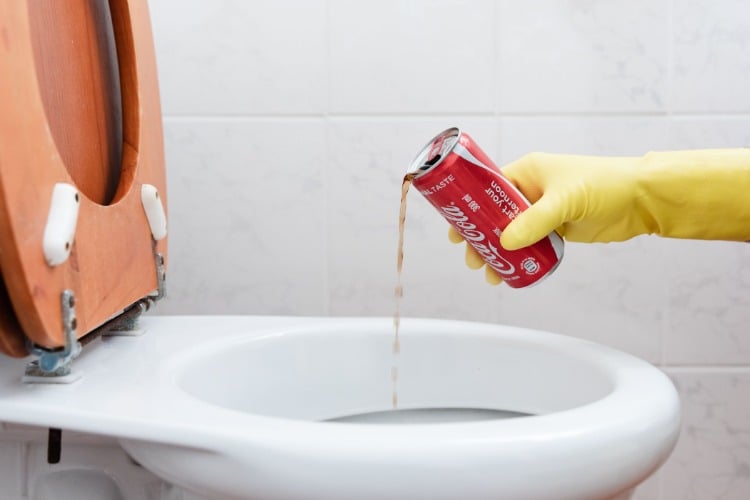
It may sound like a myth, but many people claim that they can clean toilets with Coke. So here’s how it’s supposed to work: Pour a full can around the rim like you would with detergent to completely cover the bowl. Then let it sit for at least an hour so that the acids from the popular drink can break down the stains. First you can scrub with a toilet brush and finally rinse with water. If this isn’t effective, it might be time for tip number 2.
Use pumice stone
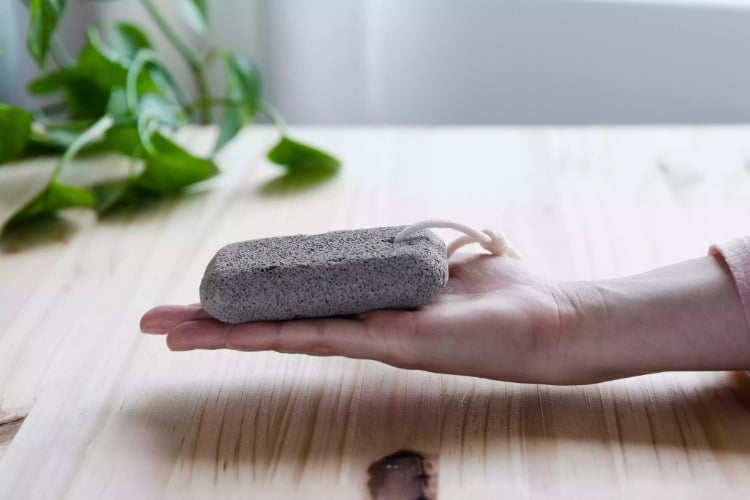
As mentioned above, a pumice stone is another unexpected but effective way to get rid of stubborn dirt in the bowl and improve the hygiene conditions in the toilet. Always start by placing the pumice stone in warm water. The stone and the toilet surface should always be wet to avoid scratches. Then gently scrub away any limescale or urine scale until it disappears and finally flush the toilet.
Clean the toilet with baking soda and vinegar
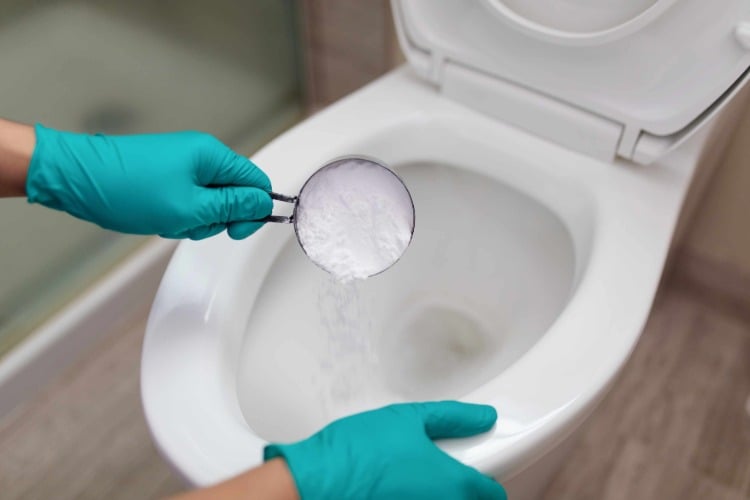
Baking soda and vinegar are two of the most useful household products that can be used to clean many things, including hard water stains in the toilet. To do this, pour about 1 cup of vinegar into the toilet bowl and spread it evenly using a toilet brush. Let the liquid work like this for about a minute. Then add about 1 cup of baking soda to the toilet bowl and add another 1 to 2 cups of vinegar. This creates a hissing sound.
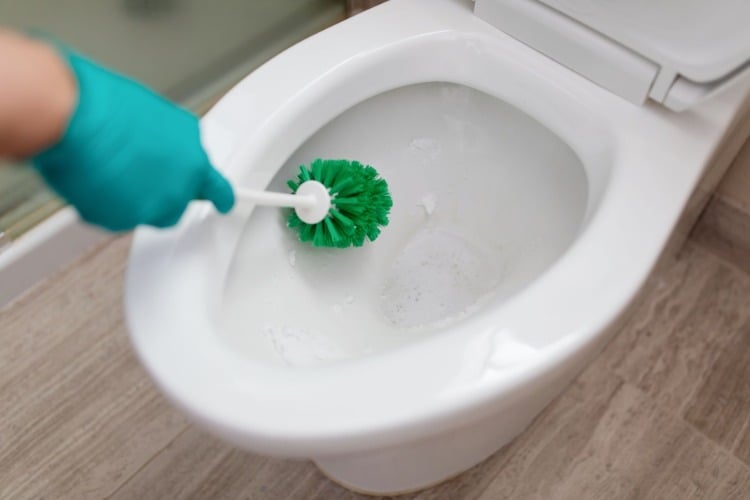
Leave the solution to work for about 10 minutes. Again, use a toilet brush to distribute the solution. Make sure everything gets onto spots above the waterline. Don’t flush the toilet. Leave the vinegar and baking soda solution to work for up to 30 minutes and spread it one or two more times until all dirt has disappeared. However, if any remain, scrub them off with the toilet brush or a stiff-bristled toothbrush. Finally, rinse everything off with water.
Clean chrome with baby oil
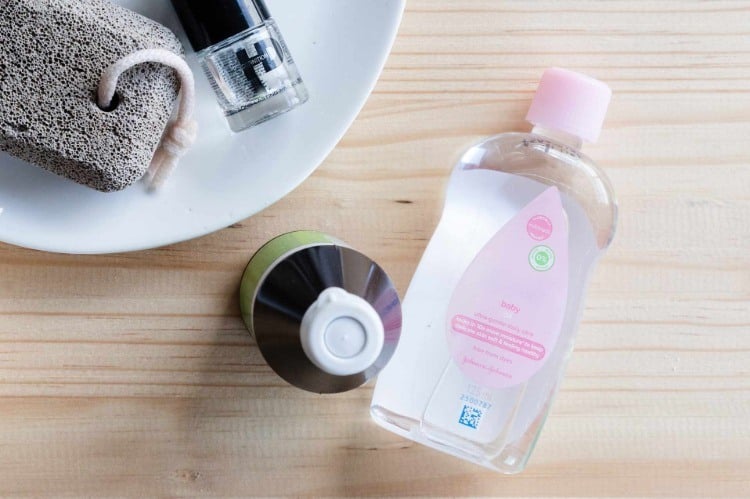
You will be amazed when you see the shiny results of baby oil on chrome faucets. You can polish up your flush button, faucets and shower head with just a few drops on a clean, soft cloth. Then add a few more drops to the cistern and toilet bowl and polish until the porcelain shines. In addition, bubble wrap reduces condensation in the cistern. First close the water valve to the toilet and then remove the lid. Rinse and wait for the water to drain from the box. Once the box has emptied, you can line the inside with a layer of bubble wrap. This additional layer of insulation prevents the outside from getting too cold and condensation.

